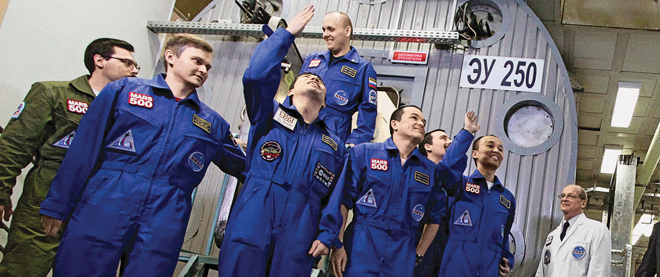Long trip to nowhere
Researchers seek to prove that travel to Mars is possible
Oleg Voloshin/AFP/Getty Images
Share

On Nov. 4, six figures emerged pale and blinking from a windowless module stationed in a Moscow parking lot. These men—three Russians, one Chinese, a Frenchman and an Italian—spent 520 days locked up inside, simulating a flight to Mars and back, an experiment run by Russia’s Institute for Biomedical Problems and the European Space Agency. Upon emerging, French crew member Romain Charles said the Earth-based mission proves that “a human journey to the red planet is possible”—or, at least, that surviving the isolation of long-distance space travel could be.
To kill time, the crew performed experiments and stayed in touch with loved ones, although communications were delayed, like on an actual mission. August was the toughest, says a blog post from Charles; family and friends were on holiday, and the best food had been consumed. But the men, who were paid about $100,000 each (China didn’t reveal a price), came out undeterred. As Charles said, “We’re ready to embark on the next spaceship going there.”